




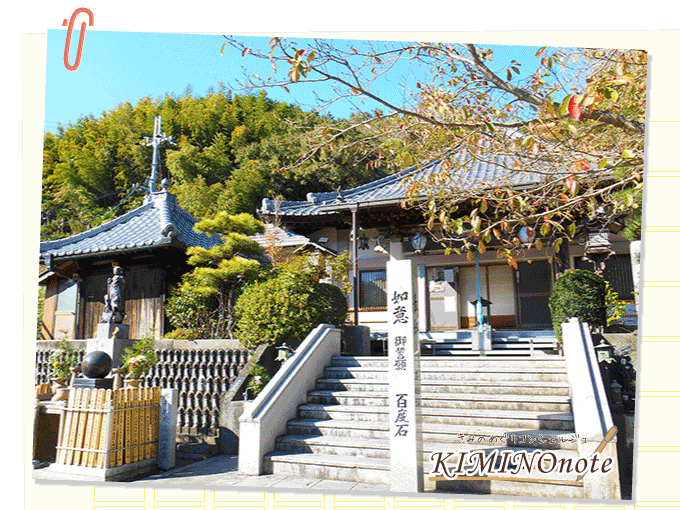
 No.3 Fudasho Rurikozan Iou ji
No.3 Fudasho Rurikozan Iou ji

 Parking available
Parking available
- Mail nokami-iouji☆ric.hi-ho.ne.jp ※「☆」→「@」
- HP http://anjin.deci.jp/index.html
- Goma Buddhist Prayer Festival (February 11th)
Exhibition Ceremony of Principle Image Yakushi Nyorai
(The 1st or 2nd Sunday of April)
Children's Ikkyu-san Experience (August 24th)
- 073-489-3159
- 112 Yoshino, Kiminocho, 640-1103
- About a 5 minute walk from Community Bus "Yoshino" bus stop



 No.4 Fudasho Horinzan Daikan Daikan ji
No.4 Fudasho Horinzan Daikan Daikan ji

 Parking available
Parking available
- 073-489-2013
- 736 Nakata, Kiminocho, 640-1114
- Right next to Community Bus "Daikanji" bus stop
There is a giant gingko tree on the precincts that creates cool shade in summer and reveals beautiful red leaves in autumn. Also, in the vicinity is Oishi Radio-kan, Kobo Daishi no Oshiage Iwa, the White Oak Tree, and Tachi-iwa Fudo, so you'll want to go check them out.
【Vow】 Good Health
This temple was opened as a branch temple of Koyasan under the name Horinzan Kanzo Temple in the late Heian period. It was occupied for about a century in the late Muromachi period by the Pure Land Sect (Jodo-shu) and the True Pure Land Sect (Jodoshin-shu) of Buddhism, but returned to Koyasan afterwards during the Momoyama Period. It merged with Daishi Temple in 1906 and was renamed Daikan Temple, to which it is known to this day.



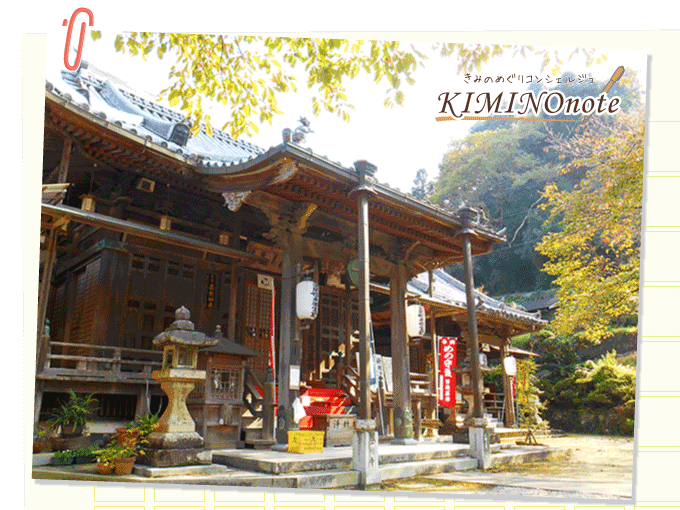
 No.5 Fudasho Ryukozan Kamatakiyakushi Kongo ji
No.5 Fudasho Ryukozan Kamatakiyakushi Kongo ji
 Parking available
Parking available
- Hatsu Yakushi (January 8th)
Spring Festival (April 8th)
Sennichi Mairi (August 6th)
- 073-489-2830
- 120 Kamataki, Kiminocho, 540-1255
- Right next to Community Bus "Kamatakiyakushiji" bus stop
The Healing Buddha of eyes is worshiped at this temple.
The scenery from this temple's high position on the mountain and the surrounding greenery relaxes the body and mind.
【Vow】 Good Health
This temple was opened as a branch temple of Koyasan under the name Horinzan Kanzo Temple in the late Heian period. It was occupied for about a century in the late Muromachi period by the Pure Land Sect (Jodo-shu) and the True Pure Land Sect (Jodoshin-shu) of Buddhism, but returned to Koyasan afterwards during the Momoyama Period. It merged with Daishi Temple in 1906 and was renamed Daikan Temple, to which it is known to this day.




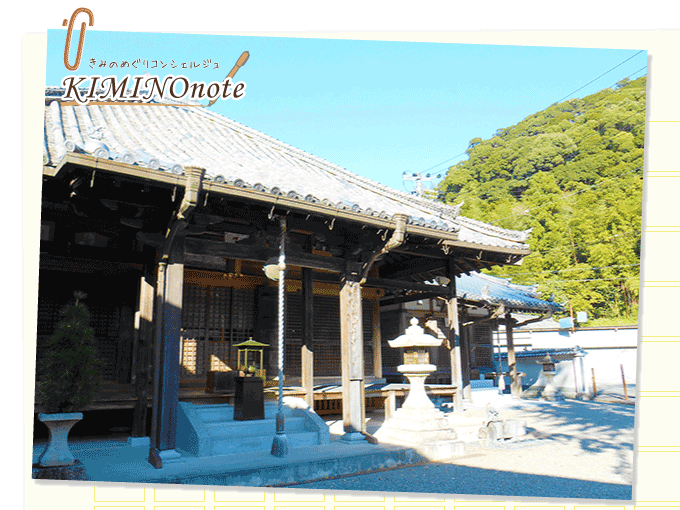
 No.6 Fudasho Zuiosan Manpuku ji
No.6 Fudasho Zuiosan Manpuku ji
 Parking available
Parking available
- Lunar Calendar Hatsuuma (First Day of the Horse) (Around March)
- 073-495-3210
- 52 Kono Ichiba, Kimonocho, 640-1243
- About a 10 minute walk from Community Bus "Shimokono" bus stop
This temple stands in a calm atmosphere under the leafy branches of a giant gingko tree.
The Buddhist festival and mochi-nage (mochi throwing) held on Hatsuuma (the first day of the horse in the lunar calendar) is lively with big crowds.
【Vow】 Bringing in Good Luck and Warding off Bad Luck
The principle image of the Eleven-Faced Kannon (treasured Buddha image) is said to be a work of Prince Shotoku and includes the Four Heavenly Kings. After Kobo Daishi established Koyasan, this temple ruled the west of Koya as a branch temple of Koyasan. At the time there were 17 temple buildings and seven halls (shichido garan), but repeated wars and fire have created its current appearance.



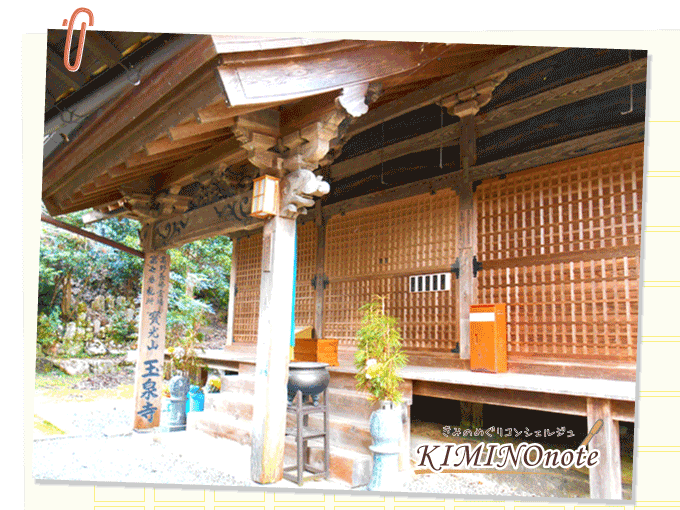
 No.7 Fudasho Hokozan Gyokusen ji
No.7 Fudasho Hokozan Gyokusen ji

 Parking available
Parking available
- Daihannya Memorial Service
(Sunday or Saturday closest to the 21st of the first month of the lunar calendar)
- 073-495-2824
- 420 Miogawa, Kiminocho, 640-1221
- Right next to Community Bus "Miogawa-ku Center Shita" bus stop
Because it is said that this temple helps with safe birth and healthy growth of children, the number of visitors praying for safety of children and safe birth is particularly high. You can also receive a girth (haraobi) for safe birth.
【Vow】 Safety of children, Safe childbirth
It began when, during his itinerant tour of Kumano headed towards Mt. Koya, Myoe Shonin placed an image of the medicine Buddha Yakushi Nyorai that he made himself in a thatched hut. The name of the temple, Gyokusen (Jewel Spring) Temple, originated with the cold water well derived from Kobo Daishi that quenches the lives of the common people.



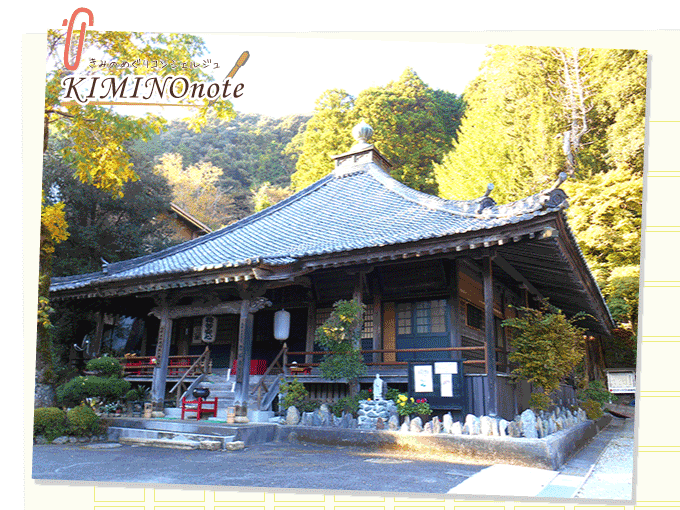
 No.8 Fudasho Chokuganzan Sofuku ji
No.8 Fudasho Chokuganzan Sofuku ji

 Parking available
Parking available
- Unveiling Ceremony of the Principle Image (11/23)
- 073-498-0431(和FAX相同)
- 24 Ta, Kiminocho, 640-1363 (Tani 51/ Main hall)
- About a 15 minute walk from Community Bus "Kuniyoshi Shinryojo" bus stop
The hall, with its dignified roof tiles, is also called Omido, and the mountainous backdrop shows scenes of each of the four seasons.
On the precincts is a giant tree called a soapberry that is 1 m in diameter, and because the Chinese name of this tree, W?hu?nzi, means 'No Suffering Child', this tree is a holy tree of the temple where people come to pray to escape suffering of the body and mind.
【Vow】 Removal of Suffering, Peace of Mind
Called Omido by the local people, this hall of Kannon is the largest in scale in all of Nogami Valley, and its principle image is the Thousand-Hands Kannon. It is also a famous place for cherry blossoms and is blessed with the changing natural beauty of the four seasons, calming and lightening the moods and soothing the minds of those who visit.


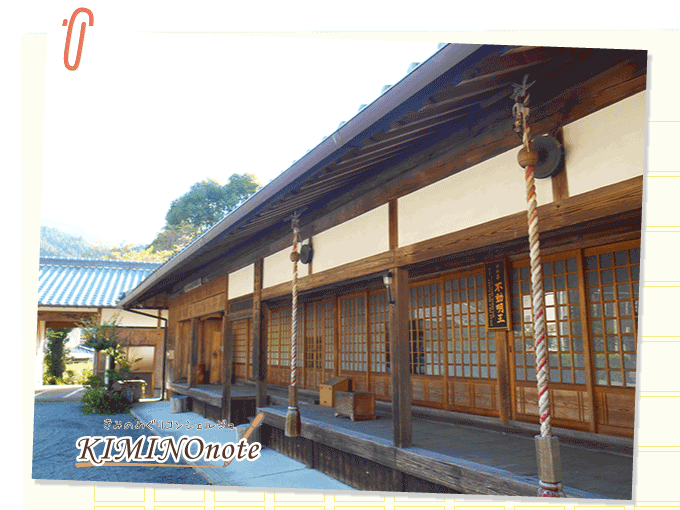
 No.9 Fudasho Tentokuzan Dainichi ji
No.9 Fudasho Tentokuzan Dainichi ji
 Parking available
Parking available
- The 28th of every month: O-Fudo-san
(Manifestation of Dainichi Nyorai)
- 073-499-0662
- 242 Kebaramiya, Kiminocho, 640-1473
- Right next to Community Bus "Kebaramiya" bus stop
When taking Route 370 toward Mt. Koya, you can see the gates of Niu Kariba Shrine on the side of the old road.Past those gates lies No. 9 Fudasho Dainichi Temple.
If you visit these spacious precincts overlooking the mountains after a long drive, you'll feel refreshed.
【Vow】Hands and Legs
The principle image of the temple, Fudo Myo-o, in his personified form as Dainichi Nyorai, stands upon a huge rock with a sword in his right hand and a cord in his left, with his entire body cloaked in flames, is said to burn away the sins and hardships of sentient beings. Also, the statue of Amida Buddha, created in the latter half of the 12th century that can be seen in the hall, has been designated as an Important Cultural Property by Wakayama Prefecture.




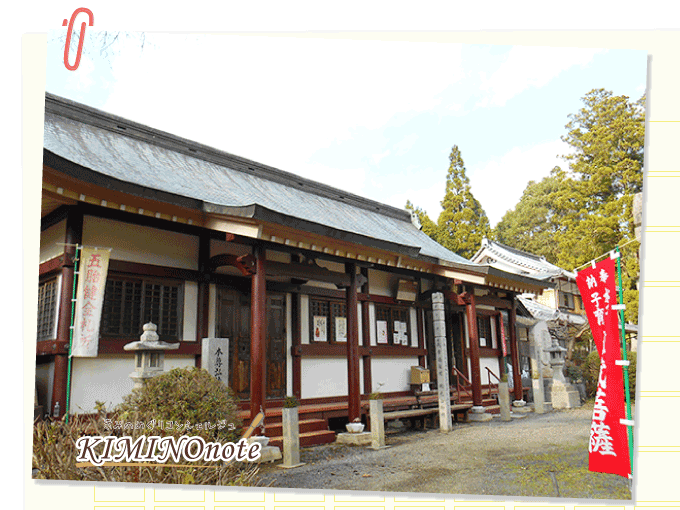
 No.10 Fudasho Okaharasan Senpuku ji
No.10 Fudasho Okaharasan Senpuku ji
- Mail senpukuji☆kimino.jp ※「☆」→「@」
- HP http://anjin.deci.jp/index.html
- Hatsuuma (First Day of the Horse in the Lunar Calendar)
(around March, the Saturday or Sunday before the actual day)
Mizuko Kuyo (memorial service for miscarried fetuses) (Autumn Equinox)
Monthly Goma Ceremony (17th)
- 073-499-0245
- 684-1 Hasemiya, Kiminocho, 640-1471
- About a 10 minute walk from the Community Bus "Taniguchi" bus stop
It is said that, if you hear the temple bells here, "disease will disappear immediately, you'll be at peace, and you'll be able to hear the sound of Buddha for 1,000 miles", which is why so many visitors come here to pray for their ears.
【Vow】 Ears
The temple was built with the name "Senpuku" (“luck springs"), meaning that luck springs forth here like the springs upstream in Kishigawa river. The principal image of Buddha at this temple, a statue of the bodhisattva Eleven-Faced Kannon, was built during the Kamakura era. Within the precincts is Wakayama's oldest temple bell, designated as an Important Cultural Property. (From Kimino Tourism)











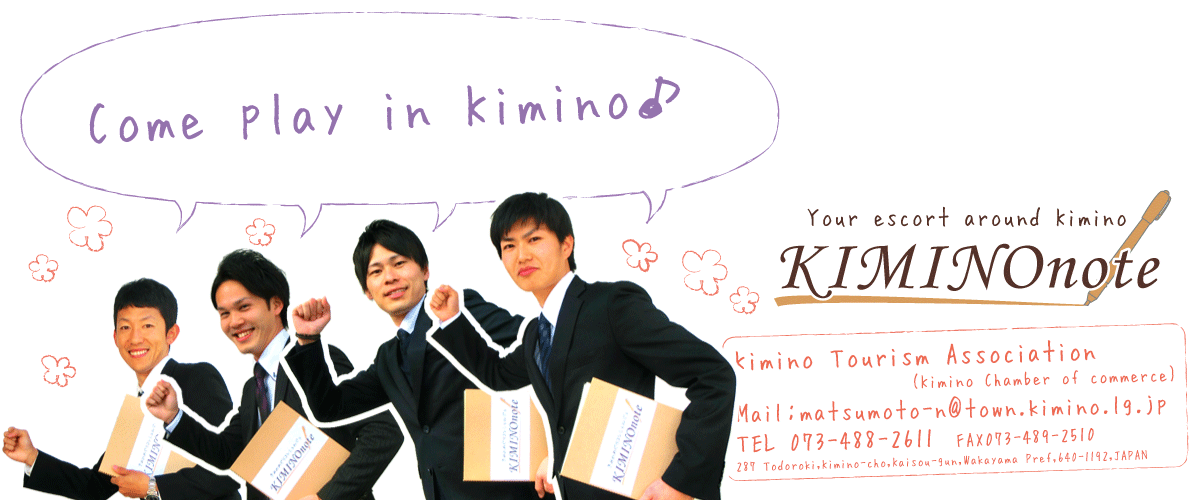

When taking Route 370 toward Mt. Koya, this is the first of the 10 Temples of Health you'll encounter.
This temple holds events to help familiarize people with Buddhism, including the Children's Ikkyu-san Experience, sutra classes, the Homa ritual, sacred hymn classes, sermons, and more.
【Vow】 Incurable disease
This temple was built long ago to protect the west end of the Koya territory.
Yakushi Nyorai is worshiped here as the principal Buddha image and is known to this day as O-Yakushi-san, a medicine man who works wonders on incurable disease.